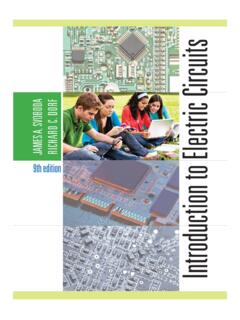Transcription of Sensory Motor Circuits - Wye Valley NHS Trust
1 printed on 100% recycled paper to support our commitment to the environment and careful use of resources. Glen Burley, Chief Executive Russell Hardy, Chairman 1 Sensory Motor Circuits How does Sensory circuit s Work? The Sensory circuit s structure is simple. A circuit runs in three sections based on theories of Sensory processing and Sensory integration. Alerting section: The aim is to provide vestibular stimulation (providing the brain with Sensory information every time the position of the head moves in relation to gravity) within a controlled environment. Alerting activities include: skipping, trampette bouncing, using a bouncing sphere and jumping jacks.
2 Organising section: This includes activities that require multi- Sensory processing and balance. The individual needs to organise their body, plan their approach and do more than one thing at a time in a set sequential order. Organising activities including climbing, hopping, balancing, and throwing should be those that provide a Motor challenge to the child. Calming Section: The calming activities provide input to support the children to complete the circuit feeling calm and focussed. Calming activities include: press-ups, crawling through a tunnel, or an exercise ball squash. Suggested equipment Trampette or trampoline Skipping rope Balance board or low bench Gym ball Soft mat/carpet Selection of balls and/or beanbags If appropriate remove shoes and socks to complete the circuit bare foot. printed on 100% recycled paper to support our commitment to the environment and careful use of resources.
3 Glen Burley, Chief Executive Russell Hardy, Chairman 2 1. Alerting section Bouncing on a trampette or space hopper. Spinning a hoop around waist. Bunny hops/crab walks/frog. Star jumps. Spotty dogs. Gym-ball for rolling over walk forward and back weight bearing through flat palms. Skipping. Throw a bean bag/ball at a target/into a bucket. Throw a bean bag/ball to a person who is walking around the trampette. Throw a bean bag/ball up in the air while counting. Sequences of little and big jumps, 5 little, 1 big. Change direction while jumping Jog and Hop. March, touching opposite hand/elbow with knee. Jump on trampette while copying gestures. printed on 100% recycled paper to support our commitment to the environment and careful use of resources.
4 Glen Burley, Chief Executive Russell Hardy, Chairman 3 2. Organising section This section includes activities that require Motor Sensory processing, balance and timing. The child needs to organise their body, plan their approach and do more than one thing at a time, in a sequential order. The second set of activities should be those that provide a Motor challenge to the child. Balancing on a beam. Log rolls, hands clasped and arms stretched out above head. Climbing wall bars. Blowing a paper ball to a target. Blow paper rocket off straw. Wobble/balance boards for balance work aiming at a target or throwing and catching to a partner. Skipping and jumping a moving rope. Throw and catch while on a balance board.
5 Balance board, put bean bags around it child picks up bean bags one by one, or in a certain order. Walk along a gym bench (could be upturned, with the child picking up bean bags and throwing them in a bucket). Infinity Walk: walk round 2 chairs, in and out in a figure of eight. Repeat with eyes closed. Bend a rope into different shapes - walk along it and jump over it from side to side. Obstacle courses: Go over and under a bench, pull along a bench with arms, roll on a mat on the floor. Commando crawling. printed on 100% recycled paper to support our commitment to the environment and careful use of resources. Glen Burley, Chief Executive Russell Hardy, Chairman 4 3.
6 Calming section Push the wall with flat palms, or lying on the floor on back push the wall with feet. Lie over a peanut or gym ball on tummy, being supported by an adult at hips and gently rock forwards and backwards, encourage weight bearing through palms and feet and active pushing forwards and back if possible. Lie on a mat on tummy with an adult gently rolling a therapy/gym ball up and down backs of legs and over back and down arms. Crawl through tunnel. animal walkslog rolls, rope walkobstacle course-under and overpeanut ball rockSTARTT rampett







